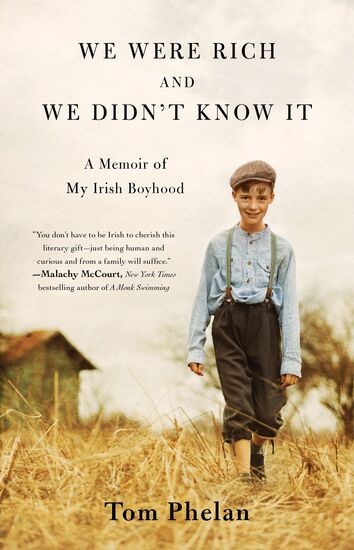By Peter McDermott
[caption id="attachment_22276" align="aligncenter" width="300" caption="Donegal marching up the Avenue in 1964."]
If the accusation were true at times that the Irish in America were parochial, it wasn't a reaction to their surroundings.
That's the view of New York University scholar Dr. Miriam Nyhan, who is joint curator of "The Fifth Province: County Societies in Irish America," showing through Jan. 25.
"It's something that they brought with them," she said.
Nyhan's students at NYU got some sense of that when they viewed the exhibit at the Irish Consulate. "It opened up their minds to how Irish and local identities in Ireland were so strong," she said. "It's something that you don't get here, so it's very interesting when I'm teaching about that."
The professor gave them a practical example from her own background. "I grew up in Arklow, which is the last town in County Wicklow," said Nyman, who collaborated on the exhibit with her colleague Dr. Marion Casey, the director of the Archives of Irish America. "Wicklow people are very different [in terms of identity] to Wexford people, many of whom, including some of my friends, are literally a mile or two down the road. That's so ingrained."
But Nyhan brought more than anecdotal evidence to the project. Her doctoral thesis, which she completed two years ago, compared the counties societies of London and New York as experienced by the immigrants who left Ireland from 1946 through 1961.
Nyhan had previously touched on the issue of Irish immigration in her book "Are You Still Below?' The Ford Marina Plant, Cork 1917-1984," as many workers from that city got jobs in the Ford Dagenham assembly plant in London.
After completing her Masters degree at University College Cork, she got an Irish government grant to study at the European University Institute in Florence. And as Continental scholarship often focuses on comparative analysis, a study of the county societies in two of the world's most important cities suggested itself.
A nation of joiners
Nyhan explored the reasons why the New York versions were far stronger even though five times as many people emigrated to Britain as to the United States in the decade and a half after World War II. One was history: the first county societies in the United States go back to the immediate post-Famine era and several were already 100 years old before their counterparts were set up in Britain after the war. Another reason also has its roots in the past. "With the geopolitical history between Ireland and Britain, they exist in a much less comfortable space than they would here," she said.
Culture played its part, too. America, a nation of immigrants, is also a nation of joiners. It makes sense, Nyhan said, that an "associational culture" would replace the extended family and friendship structures people left behind in Europe.
A crucial issue, too, was proximity and the ease with which Irish people went to Britain. When she's explained the relationship to Americans, some have told her that it reminded them of the Puerto Rican experience in New York City.
"A lot of people I interviewed really had a foot in two camps," she said of Irish people in London.
"Those who came to America were a lot more committed to being immigrants, even if they didn't use that word," she added. "They knew we have the lowest level of return. Whereas their counterparts who went to London didn't think they were going to be there 50 or 60 years."
Immigrants to America were sponsored. They came to a relative and were generally met at the point of arrival. "Whereas I interviewed people who had a row with their father the night before and got on the boat, and rang back saying 'I'm in London now,'" Nyhan said. "So it was a lot more ad hoc; there wasn't that big a commitment."
The London societies were being established at the same time as the National Health Service and the welfare state in Britain. In contrast, the New York county societies and their equivalents in the Jewish, Italian, Puerto Rican and other communities had been founded in earlier generations when they dealt with the fundamentals of life and death. The Jewish landsmanschaften, for instance, started as burial societies.
Building the archives
The case of the landsmanschaften offers a cautionary tale. Thousands of those home-town societies were active in New York from the last decades of the 19th century through the late 1930s, but they all but disappeared in the next generation.
One of the aims of "The Fifth Province" is to provoke a discussion on the future of the county societies. Large-scale Irish immigration to the U.S. stopped in 1961 and didn't begin again until the mid-1980s. That late 20th-century generation didn't join the county societies in significant numbers.
"You're seeing that gap now," said Nyhan, who was appointed to a three-year assistant professorship in 2009.
"The country had changed so much between 1961 and 1985," she said. "These immigrants came from a completely different Ireland."
A generation gap is inevitable at the best of times. "The newer immigrants and the Irish Americans want to do things differently," she said. The older émigré generation not being entirely comfortable giving way to younger locals is an issue, too, in London. Nyhan heard one man complain that his county society meeting was chaired by someone with a cockney accent.
Time might seem to be against many of New York's 32 county societies, but Nyhan pointed out that it only takes a committed three or four people to keep one active. If, however, younger Irish people opt for newer forms of organization, there will still be a remarkable 160-year history to cherish.
"The Fifth Province" has already been a huge success in that regard.
The Archives of Irish America has doubled its material relating to the subject - minute books, banners, ledgers, correspondence and photographs - as a result of the research done for the exhibit.
"For scholars down the line, it's a great addition to the history of Irish New York and Irish America generally," said Nyhan, a green card-holder who is engaged to a Jamaican. She believes, though, that there is a great deal more hidden away in attics, garages and basements that might be safer in the Archives of Irish America.
Many more oral histories have also yet to given. So far Nyhan has heard, for instance, about the importance of networking along county lines. One immigrant recalled that he knew all about the Mayo Men's Patriotic and Benevolent Association from the first day in New York. "The word of mouth was, if you have any trouble getting a job, see somebody, because the people that were in the Mayo Society had influence."
Indeed, the mayor at the time [William O'Dwyer] was from Mayo, and he had, it was said, appointed someone from a couple of villages away his police commissioner. All the other counties had their strongholds in various union locals and industries.
The "social," though, was as important as the "benevolent." Nyhan writes in the exhibit booklet about functions like the annual dances: "Young singles gathered to dance, court, and to find a match at these events. Older immigrants reunited with friends and members of their extended family. Irish American came of age fully exposed to their heritage through such year-round social gatherings."
Nyhan adds: "County societies provided a safe haven in a strange place and a welcoming familiarity to those long-settled."
"The Fifth Province: County Societies in Irish America" is showing through Jan. 25 at the Consulate General of Ireland, 345 Park Ave., 17th Fl., between 51st and 52nd Streets, New York, N.Y. 10154. For an appointment, telephone: (212) 319-2554. Hours: Monday - Friday: 12-2 p.m. Identification required to enter the building. An Open House is being held on Saturday, Jan. 22, from 11 a.m.-4 p.m. The organizers, Glucksman Ireland House and Archives of Irish America, welcome county society stories and the donation of materials.
"The Fifth Province" is an exhibition by New York University's Glucksman Ireland House & Archives of Irish America, created in partnership with the United Irish Counties Association of New York with funding from the Government of Ireland's Emigrant Support Program.








